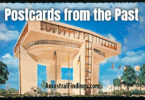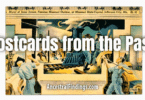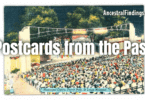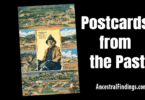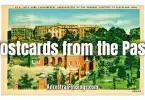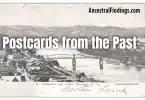This postcard brought it all back. The steel-gray tones. The Point Bridge stretching across the Monongahela. Pittsburgh’s unmistakable skyline—narrow, bold, and rising up from the meeting of three rivers.
I remember the first time I ever drove through the Fort Pitt Tunnel. You’re surrounded by mountain, nothing but concrete—then suddenly, the city appears in full. It bursts into view all at once. There’s nothing quite like that feeling, and somehow, this postcard captures it.
The Golden Triangle Before the Steel
The scene shows what’s known as the Golden Triangle—the wedge of land where the Allegheny and Monongahela rivers meet to form the Ohio. Today it’s a famous park. But long before bridges and buildings filled the view, this was one of the most contested plots of land on the frontier.
In the 1700s, the French built Fort Duquesne at the point. The British later claimed it, replacing the structure with Fort Pitt, which played a crucial role in the French and Indian War. The shape of the land made it ideal for both trade and defense. That strategic importance never really went away.
Smoke, Steel, and a City That Built America
As the Industrial Age moved in, Pittsburgh’s Golden Triangle filled with life—and smoke. Mills, railyards, and barges lined the rivers. From sunrise to sunset, soot blanketed the air. People carried handkerchiefs, and old-timers swore you couldn’t see your hand in front of your face by mid-morning.
Yet amid the smoke, the city thrived. Steel rolled out of Pittsburgh to shape the country—its buildings, bridges, rails, and even its battleships.
A Bridge That Reflected Its City
The bridge in the postcard—the Point Bridge—opened in 1927. It spanned the Monongahela River, connecting downtown Pittsburgh to the South Side. With its cantilevered steel truss design, it stood as a symbol of strength and utility.
The bridge lasted through some of Pittsburgh’s most defining years. It closed in 1959 and was dismantled in 1970. Today, it lives on in memories, stories, and snapshots like this postcard.
Renaissance, Renewal, and Point State Park
As Pittsburgh’s industries declined, so did the haze. It wasn’t instant. But by the 1960s and 70s, the city began a major transformation. Renaissance I, a civic revitalization effort, set out to clean the air and reclaim the city’s heart.
One of the boldest changes came at the tip of the Golden Triangle. Crews cleared the industrial sprawl and built Point State Park—a green space with grass, trees, and a towering fountain where smokestacks once stood. The Fort Pitt Museum still holds its ground, quietly preserving the past. Rail lines continue to snake through the city, just out of sight. The Point Bridge may be gone, but other spans still stretch across the rivers like steel signatures on the water.
A Postcard That Holds More Than a Picture
This postcard doesn’t just show a place—it brings back a feeling. The bridge is gone, but the lives it touched remain. Workers passed underneath it. Families crossed it every day. Children once traced it through fogged-up windows from the back seat of a car.
If your family lived in Pittsburgh during those years, this card might stir a memory—a passing comment, a forgotten photo, or a story told in pieces over dinner.
And if you’ve got a postcard of your own—whether it shows a skyline, a main street, or something long gone—I’d love to see it. Just click on the Contact link and ask for my mailing address. There’s always room for more history on the shelf.

